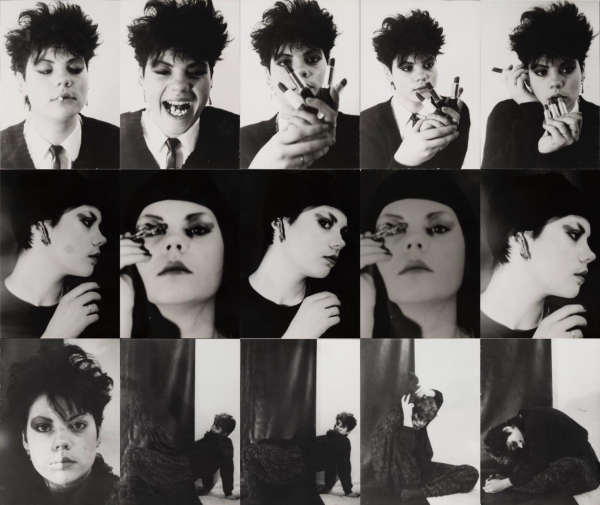Verkleidete Distanzen: migratory aesthetics and counter-public spheres in the gdr
The
exhibition, curated by Elisa R. Linn, explores the impact of borders on the formation of counter-publics at the intersection
of art, literature, and activism in the GDR during and after the fall of the Berlin Wall.
It
features artistic works, lyrical texts, archival materials, and “a library from below.” It asks how artists developed a mode
of “border thinking” (Gloria Anzaldúa/Walter Mignolo)—a way of thinking about and across the border between ideologies, languages,
identities, and normative understandings of the body, sexuality, and civic belonging. How did this way of thinking enable
them to resist the architectures of state representation and subjectification, as well as the “scissors in their heads,” that
is, inner self-censorship?
The contributions to this exhibition make borders visible—whether physical, ideological, bodily,
cultural, or media-based—and transcend and occupy them as diasporic sites of articulation. These aesthetic strategies unfold
in public, semi-public, or intimate spaces, sometimes subverting official iconographies of identity—such as socialist realism’s
vision of the “new man” promoted by the GDR state. Others search for the liberating word in lyrical and narrative texts, where
ambiguity becomes a tool for metamorphosis and “becoming-minor” as generative strategies of resistance against discursive
silencing. Some artists use autonomous, often illicit, approaches to new media—creating “intermediate transgressions” through
short film experiments that occupy legal gray zones. Others pursue performative, actionist, and photographic explorations
of the body as a political space. Still others confront colonialist, de-subjectifying ascriptions of otherness with artistic
obstinacy and subjective expression—beyond their official daily routine as contract workers in a so-called “brother country.”
The contributions gathered in the exhibition navigate between precisely this autonomy and confinement in condensed
space, between repulsion and (sexual) desire, and between community and experiences of isolation and exile. In doing so, they
encourage us to understand the transcendence and migration from one place, one identity, or one gender to another, not only
as a state of emergency, a moment of alienation, or a potential threat. Instead, they encourage us to invalidate boundaries,
to reappropriate them, to locate them in favor of their liminality, and to go beyond territorial and categorical ways of thinking.
Far from attempting to provide a linear, comprehensive overview, the exhibition explores the aesthetic potential of these
contributions from the subjective perspective of a post-reunification generation: as nonconformist practices that devised
alternative artistic forms of life, action, and democratic community, thereby sometimes questioning conformity to the norms
and property relations of West Germany's patriarchal capitalist society. What potential do these practices hold today, at
a time when nativism and isolationism are increasingly underpinning the realpolitik of a supposedly “strong,” united Germany?
Curated by Elisa R. Linn.
With contributions by Jürgen Wittdorf, Clara Mosch, Núria Quevedo, Mahmoud
Dabdoub, Gabriele Stötzer, Raja Lubinetzki, materials from the GrauZone archive, Bärbel Bohley, Ulrich Polster, Annemirl Bauer
invited by Sandra Teitge, César Olhagaray, Ronald M. Schernikau, Marina Gržinić & Aina Šmid, Künstlerinnengruppe Erfurt,
Geraldo Paunde, De-Zentralbild, Lutz Dammbeck, frau anders, Jayne-Ann Igel, Jürgen Baldiga, Ladies Neid, Namenlos, Sarah Schulman.
The exhibition architecture is designed by Lennart Wolff.




